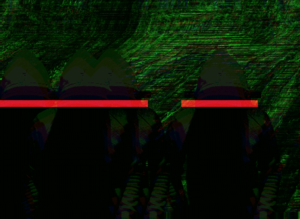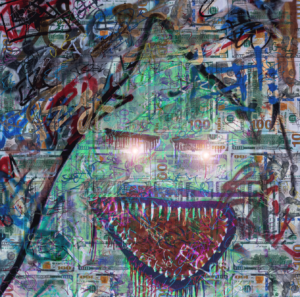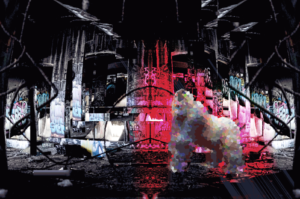We’ve transitioned from a manufacturing-based to creativity-based culture over the years. In a creativity-based culture, “the way is paved for artists, musicians, and other such types as industries of production decrease in precedence.” - Ellen Dunham-Jones, ‘New Urbanism as a Counter-Project to Post-Industrialism.’ In this POST-industrial world, how we define ourselves and what society looks like is for us to create.
As metaverse, 5G and other telecom technologies continue to advance, a new social structure has grown from infancy to wide-spread media attention. Called “web3”, this new creation utilizes NFTs as a tool for digital Identity. NFTs, the latest versions of the Industrial Revolution’s essentials - technology plus organization - do look to be a likely candidate for bringing people together in production processes.
Already important for coordination, communication, transaction, authority, sovereignty and community, NFTs are here to stay. We’re seeing new kinds of stores, new habits of time, new work processes, new forms of communication, new kinds of commerce, new ideologies, new forms of play and leisure… but what does NFT utility and adoption look like in five years? Ten years? Does NFT utility even matter? Who are the winners in the end?
With so many unknowns in this new phase of Industrial Revolution, I’ve taken it upon myself to dig into the minds and projects of important NFT creators and crypto artists. My first goal in doing so is to better clarify to new and potential collectors what the NFT market looks like right now in order to set a benchmark for future comparisons. Next, in dedicating each blog post in this series to a single artist, I’m hoping to bring eyeballs and engagement to the artist interviewed.
These are the interviews in the series so far:
- Chatting With The RektGuy
- The Brand & Business of Guido Di Salle
- The Brand & Business of TylersJourney
- The Brand & Business of Gabriella Morton
- The Brand & Business of Neil Burnell
- The Brand & Business of Dave Krugman
- The Brand & Business of DarkMarkArt
- A Chat With The Regulars
Today I’m chatting with “high-frequency glitch” Patrick Amadon, who describes his mixed media Glitch Art as having a heavy street influence and who tweeted recently about the second token launch of his “Warrior” piece on SuperRare. Now let's get to some Q&A!
Interview of @patrickamadon
What makes a good NFT experience?
The best part of NFTs is the web3 community. I don’t think a lot of people outside understand this. Any good experience with NFTs I feel is always traceable right back to a good community and genuinely enjoying time spent with people here in the space. I’m proud of my collector community. I love my collectors, I’m fortunate to be friends with many of them. I see the faith being placed in me and it’s inspiring. Finding people that believe in and support you is the most important thing you can do in this space.
What exactly is cryptoart?
Good question. I know there is a lot of confusion around this and I think even now it’s a split definition. Cryptoart is digital art that has been tokenized. But also, cryptoart defines a genre of digital art around memes that is typically pretty anti-establishment. A punk subculture.
Why do you think NFTs + your art work well together, as a product?
Without NFTs, there is no provenance and without provenance, it’s tough for anyone to assign value to digital art, speaking as a digital artist of over a decade. NFTs give us the ability to create discrete digital works of art which is an absolute revelation in the digital art world. On one side, I use photos/glitches and a lot of processing to actually create the art, but the key to all of it is tokenization. Without NFTs we don’t have a digital art market.
How do you differentiate your brand?
I spend a lot of time crafting a narrative for each piece. I want my art to be a critique or a commentary on something important. I think that’s why a lot of my work ends up pretty dark. At the core, I believe my art has value because I spend a lot of time on each piece making sure it’s the vision I want. I don’t mint the majority of my work because I’m very selective about what I want to exist theoretically forever on-chain. Also, I don’t want to leave social media out of this. The community exists on Twitter and Discord. Without community, we have nothing. I’d like to think that the people I attract are the people who resonate with my commentary.
Tell me about your favorite NFT experience.
Definitely NYC during NFT.NYC. A week of hanging out with my NFT friends in person after a year of Twitter has been two of my favorite weeks from the past year.
How do you determine what kind of collection to offer? Deciding on Editions vs. Standalones vs. Collections?
Tough question. I’ve been focused on 1/1s. 1/1s are special in their ability to create a real connection between artist and collector. Down the road, perhaps end of this year, early next, I’m open to exploring an editioned work to make my work more accessible to people. I realize I’m starting to price people out (last sale was 16.9E) and at this early stage in cryptoart and our community, it feels too early to do that. We really are all in this together.
Is your business sustainable from NFT sales alone? What % of your sales come from NFTs?
Yes, thankfully. It’s changed my life this past year to be fully supported by art after a decade of making art.
What comes next for you? Do you have a roadmap?
I’m always working on 4-5 pieces in my studio. I plan to keep releasing 1/1s on SuperRare as they are finished and exploring some options for an editioned work / collection in a few months. I’m not a huge fan of the same piece for everyone though. Looking at some options to get more work out to people that are currently priced out without necessarily just doing an edition.
What’s your plan to increase eyeballs and sales of your art?
Do interesting things and not tell people about it 🙂
Were you, as an artist, already well-established before entering into the world of NFTs?
I was reasonably well-established as an artist. I had a large following from web2 sharing digital art and have had some nice shows in the trad art world. I’ve been a digital glitch artist since before Twitter could host .gifs. Been around a long time and there were just a few of us around at the beginning. Beeple was when I decided to jump into NFTs. Saw that sale and had to know how someone sold digital art, let alone for that amount. Immediately went all-in, figured out Metamask and learned NFTs and started getting to know the art community on Twitter.
Unfortunately, unlike the world of PFP's such as Bored Apes and Punks, there isn't a cool factor or social media flex associated with cryptoart NFTs within the community. How can artists resolve this issue?
We’re starting to see the evolution now. Now that the monkey JPEG casino culture of PFPs has sobered up, we’re starting to see people recognize art and artists much more as the focus shifts. There are plenty of artists whose 1/1s carry more flex than most PFPs. Just give it a little more time. PFPs won’t keep up with 1/1 art.
I see a lack of traditional NFT-type tokenomics missing from cryptoart collections - there’s no rarity type mechanism for speculators. Why do you think this is the case? Do you see cryptoart NFTs going this direction? Why or why not?
I don’t think so. I think we see some of that with generative which is why we’re seeing a lot of PFP profits moving into generative. I think that rarity-type mechanisms are just easy mode for people to understand what we’re assigning value to.
All of the mechanisms are there in 1/1 and other art, they just aren’t in metadata. I know a lot of people are new to art in the space, and even if you aren’t new, art is a tricky thing to understand from a market perspective. They’re fun in PFPs and generative, I think unneeded and will look like pandering in 1/1s.
What does the NFT market look like in 5 years? Where do you see the innovation?
I think we just see more and more niche communities. All the innovation as far as I see, has been the ability of NFTs to bring people together and build communities. It’s not about the art, utility or anything else. Those are red herrings. Five years, NFTs will be more like IP addresses, integral part of the ecosystem, but more just part of the structure. NFTs have so many use cases for communities and digital goods but I think that community building is where all the critical innovation will help.
What’s your view on the NFT market right now?
I think we’ve all sobered up on PFPs. I think blue chips can retain value, others will be what they are - frictionless supply and ultimately worthless.1/1s and art will become more of the focus. Yes, it’s harder to understand and less liquid but… you didn’t think it was going to be as easy as 2021 was forever did you?
What do you wish people were talking about more in the NFT space?
Narrative. Especially with Dalle*2 and the sheer amount of blender/C4D renders, I’d like to see the community focusing more on the “why” of a piece and it’s story moreso than purely the aesthetics.
What’s the best marketplace for NFT creators? Is this different from the best marketplace for NFT investors?
For art - SuperRare. For now. I do feel the quest for scale dilutes the ability of platforms to function effectively. Ultimately, I’d love to see many many platforms in a truly decentralized manner focusing on their own niches and genres. It’s not like anyone finds art/projects on platforms anyway. Usually it all comes from Twitter. Ideally we can use that freedom to decentralize the platform ecosystem a whole lot more than it is now.
In closing …
I’d like to close with all the important DYOR links I could find on Patrick as well as some of my pieces from his SuperRare. Note that I've grabbed screen shots of the pieces - you've got to check them out live in full Glitch glory.
DYOR Links:
- Twitter - https://twitter.com/patrickamadon
- SuperRare - https://superrare.com/patrickamadon
- Website - https://www.patrickamadon.com/


